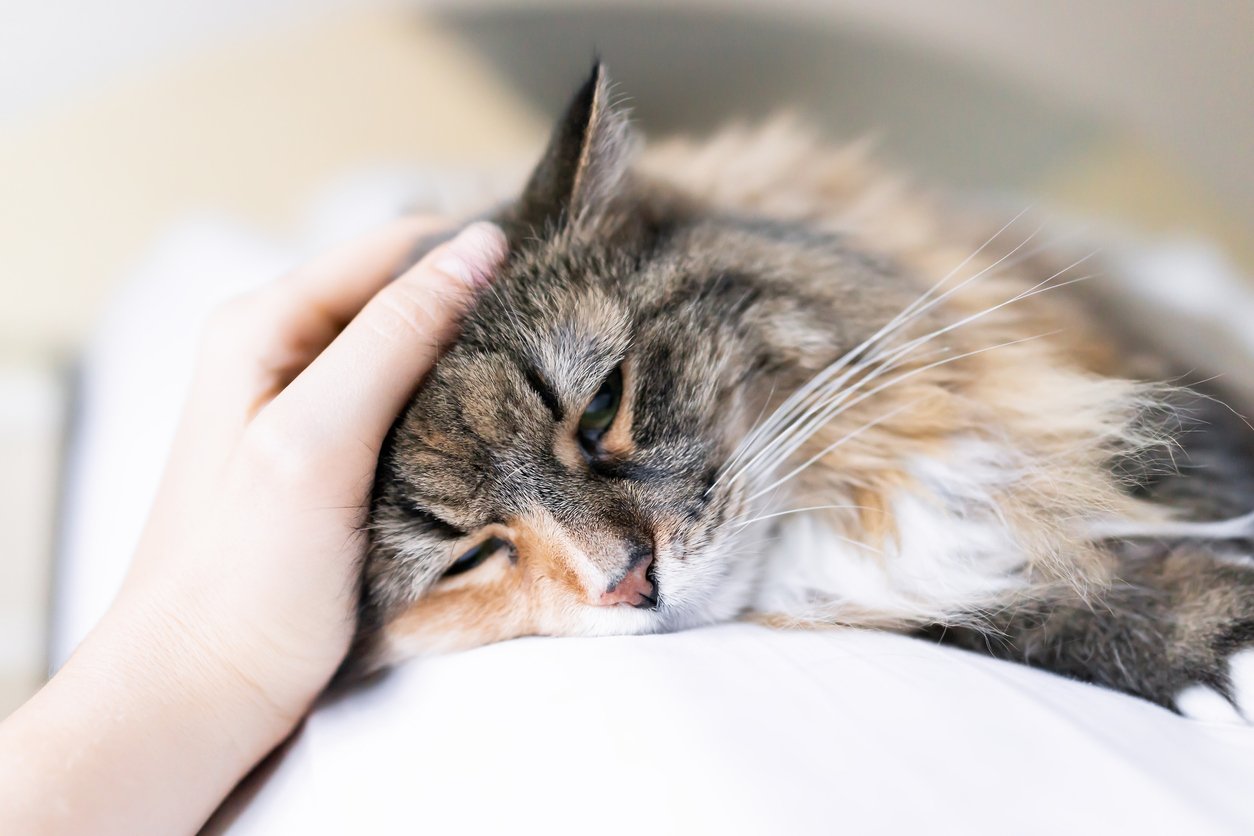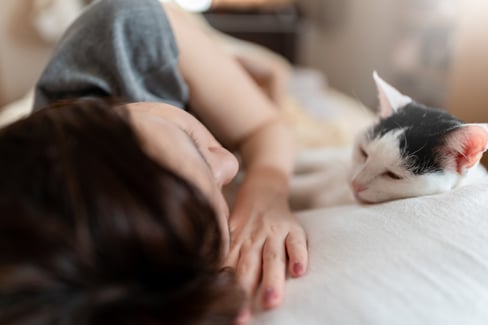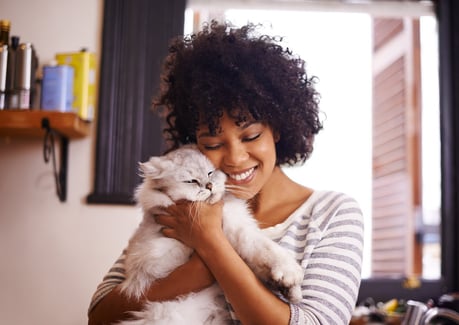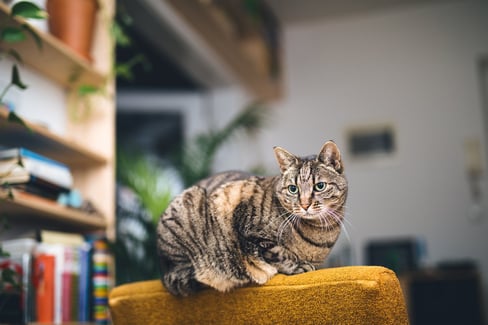Table of Contents
Don’t you wish cats could talk?
Aside from being able to share conversations with your favourite pal, it would make understanding your cat’s weird antics so much easier.
Especially when you’re worried that your furry friend is in pain.
Of course, there are some obvious signs of pain, like yowling. But what about the signs that aren’t so in your face? How can you tell if a cat is in pain?
Because cats are notoriously difficult to read (and because they can’t talk!), you’ll need to rely on some specific clues to determine if a trip to the vet is warranted.
We’re going to discuss how to identify a cat in pain below, including possible causes of cat pain and preventative and treatment measures.
Ready to dig in your claws and get to the bottom of your cat’s behaviour? Let’s get to it.
How to Tell If a Cat is in Pain
Despite how notoriously difficult cats can be to read, there are signs for how to tell if your cat is in pain. You just need to know what to look for. Signs your cat is in pain are listed below:
- Hiding or avoiding contact with you
- Lethargy
- Not eating
- Vocalization, especially growling and hissing
- Hunched posture
- Showing signs of aggression (or a change in personality in general)
- Limping or reduced mobility
Of course, it goes without saying that why your cat is in pain may determine what signs of pain she’s going to show. That is, if your cat has a broken limb, you can expect she’ll likely be limping and vocalizing.
But if the issue is more chronic, like osteoarthritis, you might notice reduced activity levels, lethargy, and avoiding contact with you.
So how do you identify the causes of a cat in pain? Let’s find out.
Common Causes for a Cat in Pain
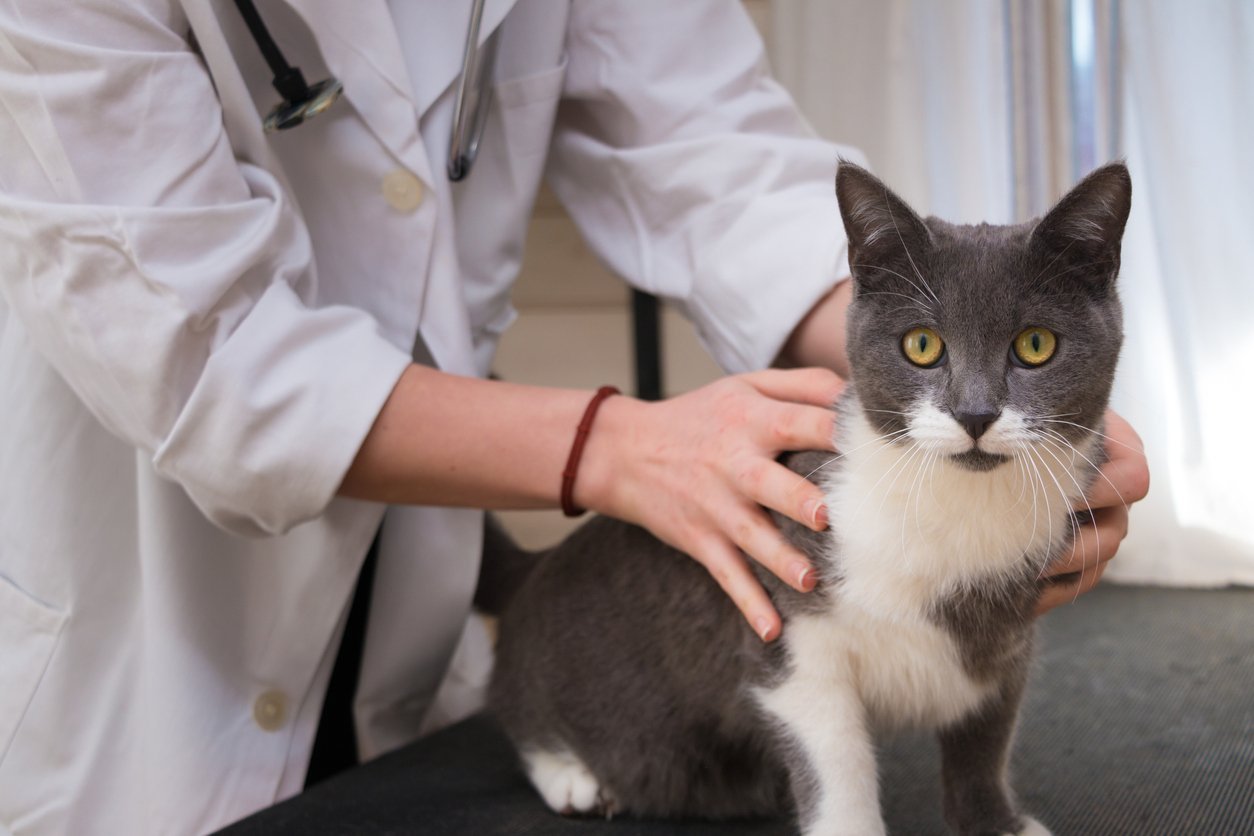
There are a myriad of reasons your cat may be in pain. But your cat isn’t going to be able to tell you what they are.
So you’re going to need to pull out some of your detective skills. If you didn’t see your cat get injured, you’ll need to think carefully about her daily activities and personality.
That is, if your cat regularly tries to jump onto furniture that’s way too tall, you might be able to surmise that the reason she’s limping is due to an unfortunate fall.
Or if she’s particularly curious and has gotten into the garbage can in the past, her digestive issues may be due to something… toxic.
We’ve listed some of the most common causes of cat pain below:
- Arthritis
- Gastrointestinal issues
- Cancer
- Acute trauma (such as breaking a bone)
- Open wounds
- Teeth or gum conditions
- Recent surgery
- Broken nails
- Insect stings
This isn’t a comprehensive list, as the list of possible cat complications is endless. So if you suspect your cat is in pain, you should take her to the vet for a thorough exam. Your veterinarian can then assess possible treatment measures with you.
Preventative Measures
Identifying the causes of pain is great and all, but you probably want to find out how to prevent it in the first place, don’t you? Below we discuss preventative measures to keep your cat pain-free.
1. Maintain a Safe Environment
Cats and a hazardous environment go together like pickles and peanut butter: not well.
Cats are well-known for getting themselves into sticky situations, such as getting trapped in places they shouldn’t be or falling from high places. There’s even a specific term that describes that second hazard: feline highrise syndrome.
As such, maintaining a safe environment for your cat is a great way to reduce the likelihood she finds herself… well, in a pickle.
So how exactly do you maintain a safe environment?
First, keep your cat indoors. This decreases the chances she’ll come into contact with things like poison or wild animals. This tip hits home when you consider the lifespan of an indoor cat versus an outdoor cat:
- Cats who go outdoors live an average of 2-5 years
- Cats who stay inside live three to five times longer (10-15 years)
Additionally, don’t allow your cat on apartment balconies and keep toxic substances (like some houseplants) out of reach. And of course, keep your home clear of choking hazards, such as small pieces of string.
2. Have Regular Vet Check-Ups
Yes, we know your cat hates going to the vet.
No, that doesn’t mean you can avoid it. Going to the vet allows you to ask a trained professional about anything that may be on your mind when it comes to your cat’s health.
And it also provides your vet with an opportunity to give your cat a thorough physical exam to make sure her body is functioning properly. Having an expert, third-party perspective is also important for providing objective feedback about your cat’s health.
Like the fact that the extra pounds your cat has packed on could cause cat pain due to the extra pressure being placed on her joints.
Aim to take your young to middle-aged cat to the vet once per year to prevent a cat in pain down the line. If you have a senior cat, opt for more frequent visits every six months or so.
3. Feed a Healthy Diet
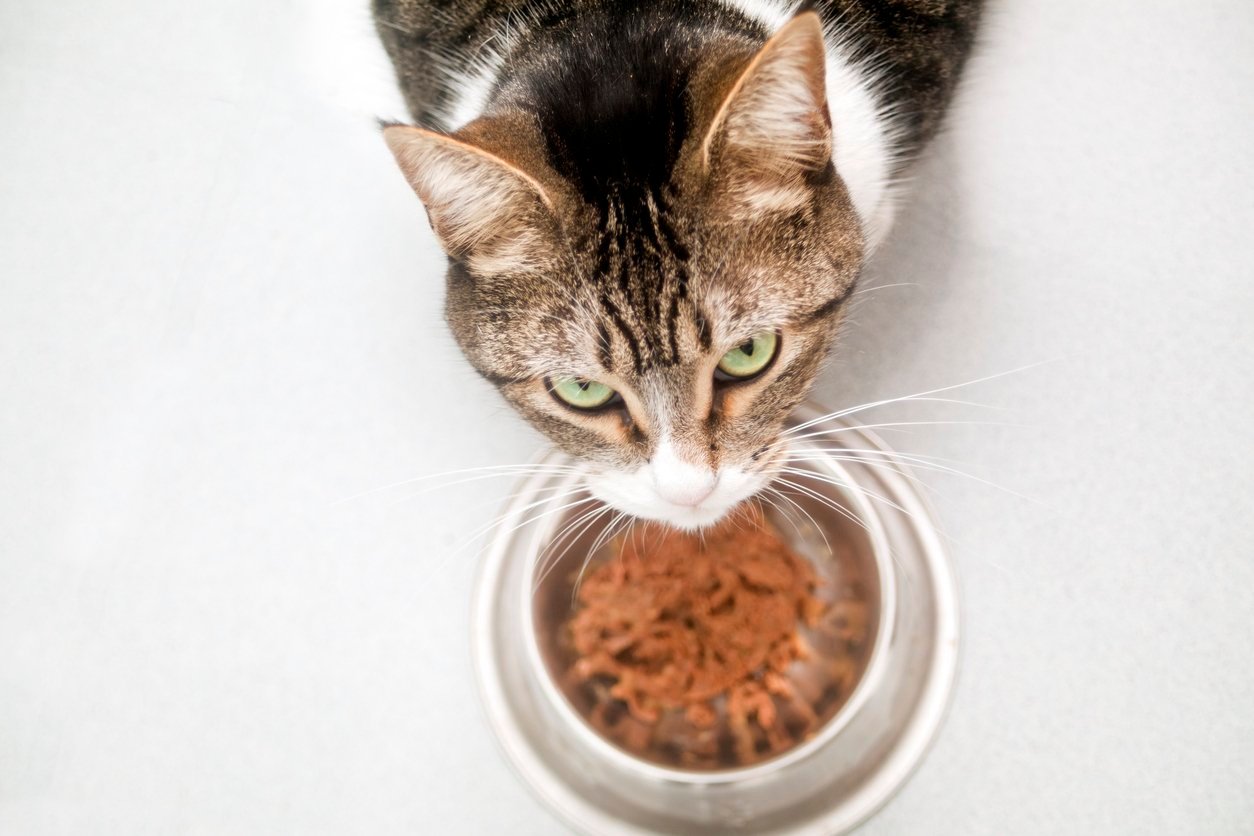
Your cat would probably prefer a meal full of treats.
But making sure she’s eating a healthy diet is key to maintaining cat health and reducing pain. That’s because staying at a healthy weight reduces the likelihood she’ll develop joint conditions that can lead to pain, such as arthritis.
Additionally, antioxidant-rich foods boost your cat’s immune system. We’ve listed some key vitamins and minerals that help keep your cat healthy below.
| Vitamin or Mineral | Benefit to Your Cat |
| Vitamin A |
|
| Vitamin B3 (Niacin) |
|
| Iron |
|
| Calcium |
|
If your cat has a deficiency in any one vitamin or mineral, she may become more susceptible to conditions that can cause pain. That’s why it’s key to maintain adequate nutrition levels and take your cat to the vet if you suspect a nutrient deficiency.
Always check your vet before adding a vitamin or mineral supplement to your cat’s diet. Too many of certain nutrients can be toxic to your pet.
Finally, make sure your cat is hydrated throughout the day, such as by feeding her wet cat food. Water helps flush out toxins and keep your cat’s internal organs (like her kidneys) healthy and pain-free.
4. Provide a Joint Supplement

Cat supplements are another excellent preventative cat pain measure. In particular, joint supplements prevent pain that results from unpleasant conditions like cat arthritis.
This degenerative joint condition develops when your cat’s cartilage begins to wear away. Over time, this can cause your cat’s bones to rub against one another, causing lots of pain and inflammation.
But fortunately, certain active ingredients can help prevent arthritis by maintaining joint health. In particular, you’ll want to use a joint supplement that includes the active ingredients in the table below.
| Active Ingredient | Benefit |
| Glucosamine |
|
| Chondroitin |
|
| MSM |
|
| Hyaluronic Acid |
|
TRI-ACTA H.A. and TRI-ACTA for pets include these active ingredients. If you’re in the market for a supplement, you can find out where to buy these on our website.
5. Get Regular Exercise
Just like you, cats need regular exercise to keep their body healthy. Exercise keeps your cat at a healthy weight and promotes strong and healthy bones, muscles, tendons, and ligaments.
So, why is that a good thing? Because a healthy weight and strong body reduce the likelihood that your cat will sustain injuries and become a cat in pain.
You should aim to provide your cat with 30 minutes of exercise per day. That’s right: you may need to be a bit more proactive with this preventative measure. Many cats would much rather sleep than exercise.
If your cat sleeps the day away, try to wake her up periodically for a short play session. This can involve playing with a feather wand or encouraging a game of “hide and seek” by placing treats around the house for her to hunt. Cat trees can also be a great way to encourage safe climbing as exercise.
Cat in Pain Treatments
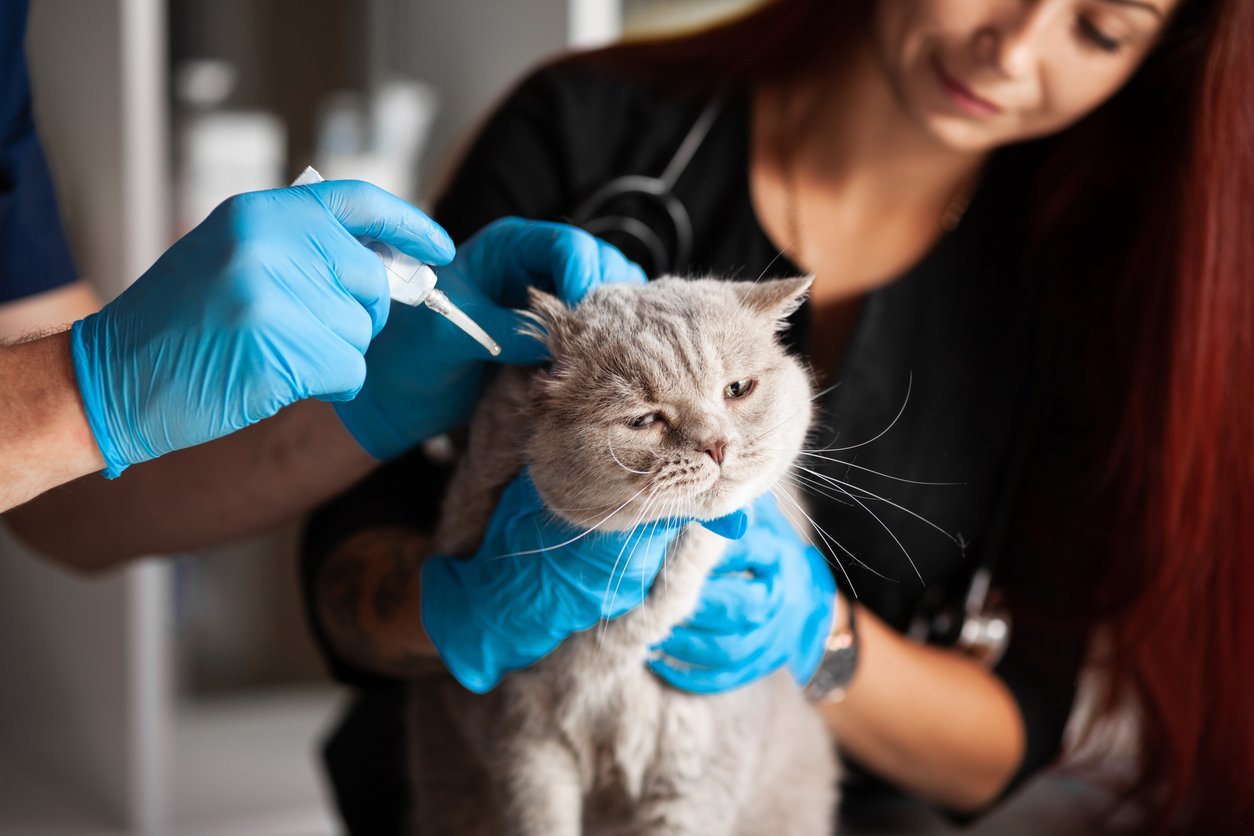
If all else fails and your preventative measures don’t work, you may be wondering what to give a cat for pain. Read on to learn about cat pain relief and treatment.
1. Non-Steroidal Anti-Inflammatories (NSAIDs)
If you’ve ever had a muscle ache and taken an NSAID, then you’re well familiar with their pain-reducing abilities. Fortunately, NSAIDs can also help treat pain for your cat too.
After asking your vet “what can you give a cat for pain?”, she may prescribe a couple types of NSAIDs to help your cat in pain.
- Meloxicam
- Robenacoxib
That’s right: they must be prescribed. Never give your cat an over-the-counter NSAID. This can be toxic for her and lead to a whole lot more pain than she was experiencing before.
Just keep in mind that your cat may experience negative side effects from using an NSAID, such as:
- Vomiting
- Nausea
- Lethargy
If you notice any of these side effects, discontinue use and call your vet ASAP.
2. Surgery
If the cause of your cat’s pain is due to something like a bone fracture or arthritis, then surgery may be required to treat and minimize the pain. Surgery helps reduce pain because it fixes the underlying issue at hand.
Generally, if your cat needs to have surgery, your vet will encourage you to restrict food for a certain amount of time before the surgery.
Fortunately for you and your cat, most cat surgeries are low risk. They do, however, require a recovery period which can certainly test your patience. It’s not easy keeping your cat from licking his wounds, so to speak!
As such, you will need to help with your cat’s hygiene by regularly changing bandages, as well as encouraging rest by limiting your cat’s movement. Additionally, your cat may require physical rehabilitation post-surgery. We’ll discuss that treatment measure next.
3. Physical Rehabilitation

Physical rehab can help your cat become reacquainted with how to move pain-free in the world. In particular, your vet may recommend physical rehab if your cat has recently undergone a serious surgery. In fact, recovering from a bone fracture or other trauma is one of the most common reasons for prescribing physical rehabilitation.
Your vet can point you in the right direction when it comes to finding a certified physical therapist for pets. The physical therapist will encourage certain activities that help improve your cat’s ability to move around without pain. These might include:
- Cat massages
- Stretching
- Low-impact exercises
Additionally, your vet may recommend laser therapy or acupuncture as alternative ways to promote physical rehabilitation and minimize pain.
4. Joint Supplements
Earlier we discussed how joint supplements can help prevent pain. But did you know that cat supplements can treat pain, too?
In particular, the active ingredient MSM is an antioxidant that can reduce pain and inflammation in your cat’s body. So if your cat has a joint condition, such as arthritis, feeding her a supplement that contains MSM can be a great way to reduce her pain.
When trying to find the right supplement for your cat, there are a few key things to keep in mind. First, you should try to find a supplement that contains as few fillers as possible. Additionally, a supplement that has been third-party tested for quality is a great way to ensure a supplement’s ingredients are top-notch.
TRI-ACTA H.A. for pets meets all of these qualifications, including using MSM to help reduce pain and inflammation in your cat’s body.
TRI-ACTA H.A. for Pets
Our maximum strength formula is optimally designed to accelerate the formation of cartilage, minimize inflammation, expedite the healing process, and improve joint conditions.
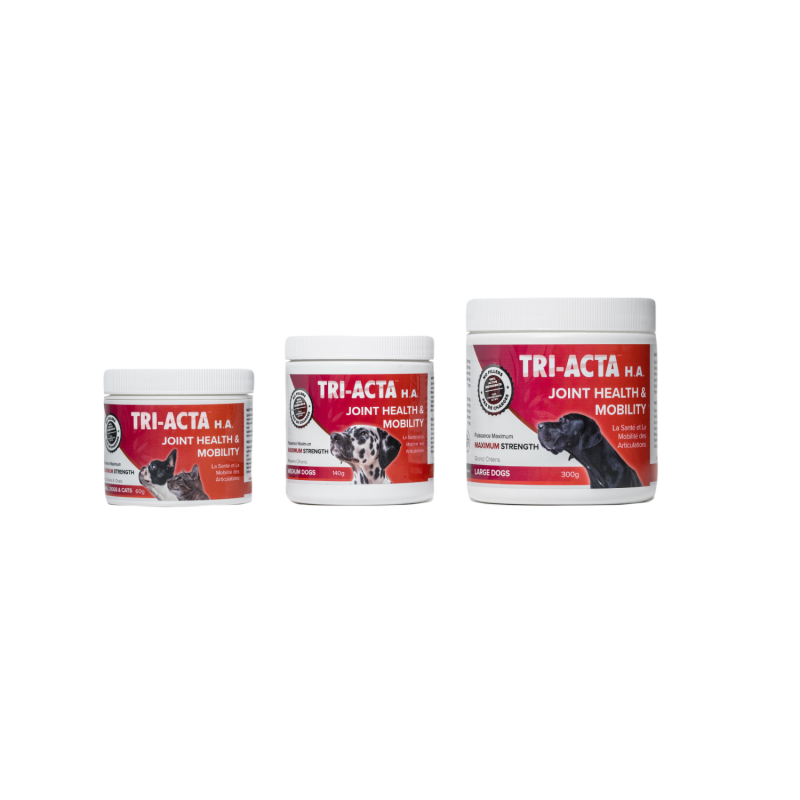
5. Environmental Modifications
Last but not least on our list of treatment measures is environmental modifications. These can help your cat get around more easily, which is especially important if your cat’s pain is being caused by a recent surgery or arthritis.
You’ll want to make sure your cat has access to all of her favourite cuddling spots so that she can rest and heal. As such, you should bring cat beds to the floor.
You may also consider installing a ramp to your bed or couch. That way, your cat can still get plenty of love (which we all know helps speed recovery!).
Additionally, lowering food and water bowls can make it easier for your cat to eat and drink. Similarly, using a kitty litter box that has short sides means she won’t have to step as high to do her business, reducing the likelihood of accidents.
You can thank us for that last tip later.
Best Supplements for a Cat in Pain
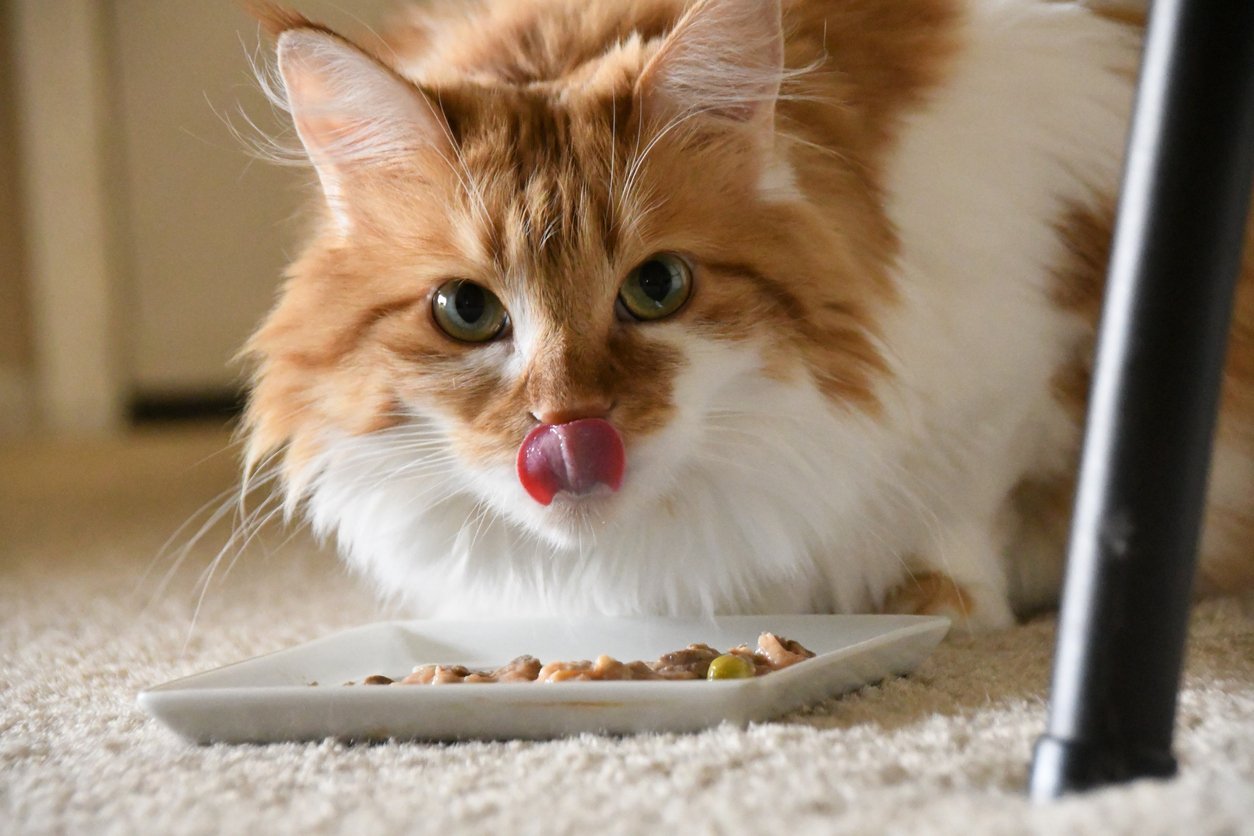
You’ll want to choose a supplement depending on the specific cause of your cat’s pain. Below, we discuss the best supplements if your cat is experiencing pain due to arthritis, a skin disorder, digestive issues, and more. Take a look!
1. Integricare TRI-ACTA H.A. for Pets
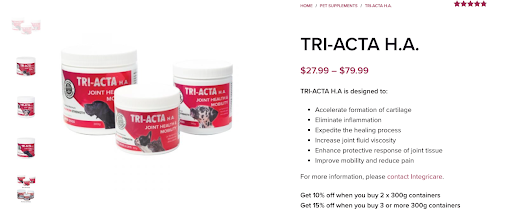
Anyone who’s experienced arthritis of their own knows this condition can be debilitating. Fortunately, TRI-ACTA H.A. for pets is a great supplement option for a cat in pain due to arthritis or another joint condition.
This supplement contains the key active ingredients we discussed above, including MSM for pain and inflammation reduction.
- Glucosamine
- Chondroitin
- MSM
- Hyaluronic acid
And since arthritis is a progressive disease, it never hurts to get ahead of it! So if you’re looking for a supplement to help prevent painful joint conditions from beginning in the first place, you may want to look into our sister supplement, TRI-ACTA for pets. It contains glucosamine and chondroitin for cartilage health, plus MSM for controlling inflammation.
Additionally, our supplements are filler-free, so every bite your cat takes is full of active ingredients, not unnecessary preservatives and artificial flavours.
Price for TRI-ACTA H.A. for Pets as of November 2021 is $27.99 to $79.99
Price for TRI-ACTA for Pets as of October 2021 is $23.99 to $64.99
TRI-ACTA H.A. for Pets
Our maximum strength formula is optimally designed to accelerate the formation of cartilage, minimize inflammation, expedite the healing process, and improve joint conditions.

2. Zesty Paws Core Elements Wild Alaskan Salmon Oil
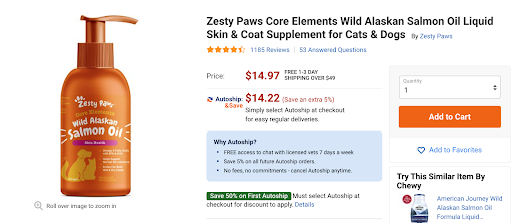
If your cat in pain is suffering from itchy, flaky skin or an open wound, Zesty Paws Core Elements Wild Alaskan Salmon Oil is a great way to help get her coat back to normal.
That’s because this supplement is full of omega-3 fatty acids, which help support skin and coat health. In particular, EPA and DHA work together to give your cat’s skin (and even brain!) a boost.
The supplement has received great reviews and is incredibly easy to add to your cat’s food. Simply add the recommended dosage to your cat’s food each day, and her fur will be shining in no time.
Price as of October 2021 $14.97 to $35.97
3. Fera Pet Organics Probiotics with Organic Prebiotics
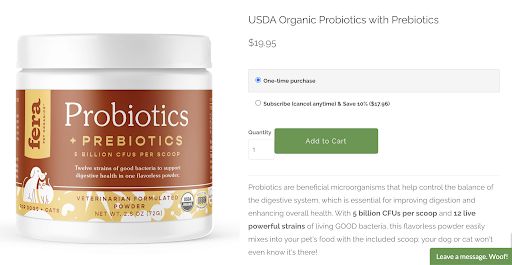
If your cat in pain is facing tummy troubles, Fera Pet Organic Probiotics with Organic Prebiotics might help.
This probiotic and prebiotic supplement includes 12 live strains of bacteria and is great for cats who have digestive issues. That’s because prebiotics and probiotics are incredibly important to maintaining the health of your cat’s digestive tract.
This supplement is also incredibly easy to add to your cat’s food because it comes in a powder formula (just like Integricare’s TRI-ACTA). And it has the bonus of reducing symptoms like itching (which can certainly cause pain) that may be caused by allergies.
Price as of October 2021 $19.95
4. RX Essential Cat Supplement
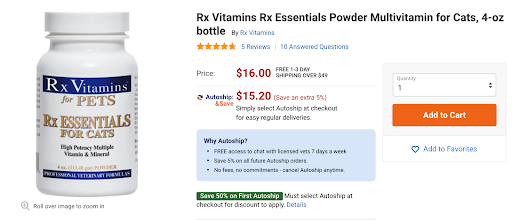
RX Essential Cat Supplement is the perfect supplement if your cat has a vitamin deficiency that’s causing her pain. It contains many of the vital vitamins and minerals that can keep your cat healthy and free from pain, including Vitamin A, Vitamin D, Calcium, Zinc, and more. Plus, it’s incredibly affordable at just $16 per bottle.
We do have to reiterate, however, that you should always check with your vet before feeding your cat a multivitamin supplement. Certain vitamins and minerals can build up in your cat’s body at unhealthy levels over time.
Price as of October 2021 $16.00
5. Nature’s Pure Edge MSM Chicken Flavored Cat Supplement
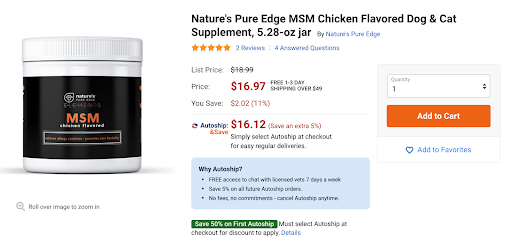
Last but not least, Nature’s Pure Edge MSM Chicken Flavored Cat Supplement is a great option if all you’re looking for is MSM. This affordable supplement contains a therapeutic dose of MSM to help reduce pain and inflammation.
And while that may be just what you’re looking for, we do recommend taking a more holistic approach to your cat’s joint health. A supplement that also contains active ingredients like glucosamine and chondroitin will keep your cat’s cartilage healthy, treating the underlying issue and thereby reducing the pain she experiences.
Plus, many joint supplements contain MSM in addition to those other key active ingredients.
Price as of October 2021 $16.97
Common Questions About Cats in Pain
“Why is my cat purring while in pain?”
You’re right to assume that sometimes cats in pain may purr. While biologists don’t know exactly why they do so, some researchers believe it may help speed recovery. If you have a cat purring in pain, try to determine what the cause may be. If your cat has an open wound or is in immediate need of veterinarian care, call your vet to assess the next steps.
“What to do when my cat is screaming in pain?”
If you have a cat screaming in pain, your mind might be frantically cycling through statements like “My cat is in pain. What can I do?” Call your vet. They will advise you of your next steps, which may include taking your cat in for an exam. If your cat has broken a bone or has suffered another severe trauma, your vet will have specific instructions for the best next steps and how to transport your cat to the vet.
Conclusion
No pet parent wants to see their cat in pain.
And with such a wide variety of causes for pain, it can be downright frustrating trying to figure out how to proceed when you know your cat’s not feeling well.
Fortunately, there are a variety of preventative and treatment measures you can take to make her more comfortable. One way is feeding your cat a joint supplement.
So if you’re looking for a supplement to help ease your cat’s pain, TRI-ACTA H.A. or TRI-ACTA for pets can help. Find out where to buy on our website.
Newsletter Signup
Subscribe to our newsletter to receive the latest news and exclusive offers.
.jpg?height=2000&name=Cliick_Integricare-DISPLAY-REVISEDV2%20(1).jpg)
Proactive & Therapeutic Joint Supplements
When given daily, Integricare joint supplements recover bone and joint injuries faster and help prevent mobility injuries from happening in the first place.

